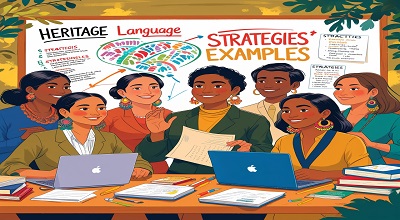Heritage Language Teacher Training
Heritage Language Teacher Training: Heritage language education plays a crucial role in preserving cultural identities and fostering multilingualism. As the global landscape becomes increasingly diverse, the need for effective heritage language teacher training has never been more pressing. This article delves into the latest strategies, methodologies, and examples in heritage language teacher training, providing educators with comprehensive insights to enhance their teaching practices.
Understanding Heritage Language Learners
Heritage language learners are individuals who have been raised in a home where a non-majority language is spoken and who are typically bilingual or multilingual. They often possess oral proficiency in their heritage language but may lack formal literacy skills. Recognizing the unique needs of these learners is essential for developing effective teaching strategies.
Core Principles of Heritage Language Pedagogy
- Cultural Relevance: Integrating cultural contexts into language instruction to make learning meaningful and engaging.
- Literacy Development: Focusing on reading and writing skills to complement oral proficiency.
- Student-Centered Approaches: Employing methods that consider the learners’ backgrounds, interests, and experiences.
- Community Involvement: Collaborating with community members to enrich the learning experience and ensure authenticity.
Innovative Strategies in Heritage Language Teacher Training
1. Project-Based Learning (PBL)
PBL encourages students to engage in real-world projects, promoting critical thinking and problem-solving skills. In heritage language contexts, PBL can involve tasks like creating cultural documentaries or conducting oral history projects. This approach not only enhances language skills but also deepens cultural understanding.
2. Technology-Enhanced Learning
Utilizing digital tools and platforms can facilitate interactive learning experiences. For instance, online modules and language apps can support vocabulary acquisition and grammar practice. Blended learning environments that combine face-to-face instruction with online resources have shown promise in heritage language education.
3. Collaborative Learning
Encouraging peer interactions and group activities fosters a supportive learning community. Collaborative tasks, such as group discussions or joint presentations, allow learners to practice language skills in authentic contexts.
Case Studies and Examples
UCLA’s Heritage Language Curricula
The University of California’s National Heritage Language Resource Center has developed curricula tailored for heritage language learners. These materials incorporate principles of heritage language pedagogy and have been implemented in real-world classrooms, serving as valuable resources for educators.
Indigenous Language Revitalization Programs
Programs like the Canadian Indigenous Languages and Literacy Development Institute focus on training Indigenous language teachers through university-credit courses. These initiatives emphasize the importance of community involvement and culturally relevant teaching practices.
Challenges in Heritage Language Teacher Training
- Resource Limitations: Access to quality teaching materials and professional development opportunities can be scarce.
- Institutional Support: There may be a lack of institutional recognition and support for heritage language programs.
- Teacher Preparation: Educators may require specialized training to effectively teach heritage language learners.
Best Practices for Effective Teacher Training
- Continuous Professional Development: Engaging in ongoing training ensures educators stay updated with the latest pedagogical strategies.
- Community Engagement: Collaborating with community members enriches the learning experience and provides authentic language use contexts.
- Reflective Practice: Encouraging educators to reflect on their teaching practices promotes continuous improvement.
Conclusion
Effective heritage language teacher training is pivotal in preserving linguistic diversity and fostering cultural understanding. By adopting innovative strategies, addressing challenges, and implementing best practices, educators can enhance the learning experiences of heritage language learners. Continued investment in teacher training is essential for the sustainability of heritage language education.
Frequently Asked Questions (FAQs)
What is heritage language education?
Heritage language education focuses on teaching languages spoken in the home or community, aiming to preserve cultural identities and promote multilingualism.
Why is teacher training important in heritage language education?
Proper teacher training equips educators with the skills and knowledge necessary to address the unique needs of heritage language learners.
What are some challenges faced in heritage language teacher training?
Challenges include limited resources, lack of institutional support, and the need for specialised training programs.
How can technology enhance heritage language education?
Digital tools and platforms can provide interactive learning experiences, support vocabulary acquisition, and facilitate grammar practice.
What are best practices for training heritage language teachers?
Best practices involve continuous professional development, community engagement, and reflective teaching practices.
Ftee Download: X Survive MOD APK
